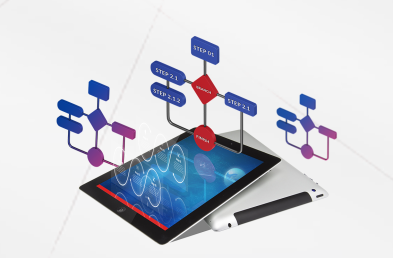In the fourth century, Aristotle identified the heart as the center of vitality in the body. Since then, the heart has played an essential role in helping us understand the body, and still, in today’s modern age, the heart remains a constant in terms of health and longevity.
Pause now for a moment and feel your heart beating. Pretty neat, isn’t it?
At Premergency Inc, we strive to accomplish two primary objectives regarding cardiovascular health:
- Help people prevent heart diseases
- Help people be prepared to respond to cardiac emergencies
So, let’s look at how we can improve our heart health and respond to cardiovascular emergencies.
Preventing Cardiovascular Disease: How to Improve our Heart Health
We know there are quite a few ways to improve your health, but we want to share four tips we consider are essential and a good starting point.
Tip 1 – Stop Smoking
No if, and, or butts. Avoiding tobacco is one of the best things you can do to have a healthy heart and is one of the top controllable risk factors for heart disease. However, if you feel you are unable to stop smoking or don’t want to, consider cutting back a little each day.
Tip 2 – Heart-Healthy Foods
Eat well and nourish your heart with Heart Smart Foods. For example, Go Fish and Eat Colour! Try to eat fish high in Omega-3 fatty acids at least twice a week. Salmon, mackerel and herring are great options. Get some colour into your diet with a wide range of brightly coloured vegetables and fruits every day. Eat orange, purple and dark green vegetables and berries more often.
Tip 3 – Go Cardio
The heart is a muscle that needs movement and exercise to keep it healthy and strong. If you lead a sedentary lifestyle, try to focus more on cardiovascular exercise. Try standing instead of sitting, deep breathing instead of shallow breathing and walking whenever you can. If you are moderate to vigorously active, turn it up a notch by playing a new sport or try a HIIT Class (High-Intensity Interval Training); this will get your heart pumping!
Tip 4 – Be Joyful
Practice gratitude by shifting your focus to the good things in your life that you are grateful for (i.e., Your little heart that never stops pumping!), and laugh out loud. According to the American Heart Association, research suggests a good belly laugh can lower stress hormones, decrease inflammation in your arteries, and raise your levels of high-density lipoprotein (HLD), aka “good cholesterol”.
Be prepared: How to Respond to Cardiovascular Emergencies
According to Statistics Canada (2012), more than 63 200 deaths occur each year in Canada due to Cardiac Arrest. Sudden cardiac arrest is unpredictable; it can happen to anyone, anywhere, anytime, at any age, and without any warning. Knowing what to do when this happens is critical. We want to share a few important details with you that can help you respond with confidence and render first aid until professional help arrives.
How to recognize a Heart Attack:
There is a range of signs and symptoms that indicate a potential cardiac emergency. Changes in a combination of the following are indicative of a heart attack:
- Chest pain or discomfort often described as a heaviness, crushing or squeezing pain.
- Skin colour; pale or ashen gray skin colour.
- Sudden onset of nausea, vomiting, weakness or a cold sweat with no apparent reason.
- Pain or discomfort in the jaw, arms, back or stomach. Feeling of indigestion.
- Shortness of breath.
- Irregular heartbeat. Fainting.
- Feelings of impending death. Fear.
Immediately. Quick activation of 911.
If you are with another person, get him/her to call 911 immediately and provide them with the information they request. Getting professional help as soon as possible is very important. If you are on your own, call 911 and follow their instructions.
Know CPR – In case of Cardiac Arrest – Get on the Chest and Go!
If the patient goes unconscious and it is not breathing, start CPR immediately. Knowing Cardiopulmonary Resuscitation (CPR) for adults, children and infants, can be a big difference during an emergency. Be sure to get First Aid training with a certified professional.
Applied Knowledge and Training of CPR & AED (Automated External Defibrillator)
Let’s be clear with one thing: Survival rates increase by 75% if we apply CPR + AED within the first 5 minutes of a cardiac arrest. Responding with CPR and using an AED is the only effective intervention a first responder can provide until professional help arrives.
While doing CPR, ask someone to find an Automated External Defibrillator. Today, every AED will give you instructions on its use, but understanding how it works and its safety requirements will allow you to respond more efficiently.
When professional help arrives, allow them to take over the situation and follow their instructions. Please provide them with all the information they need. Now, your job is done, and you just helped save a life!
A Healthy Heart + Safe Response Mindset
This month was about bringing attention to cardiovascular health and, moving forward, we must continue raising awareness on the importance of maintaining a healthy heart and being prepared to help those in need.
Keeping a healthy heart and safe response mindset – Cardiovascular health know-how- will help you stay in shape and keep everyone around you safe.
At Premergency, we want to empower people to help people. If your team is looking to prepare with confidence and learn more about how to respond to emergencies, you can register for our Blended (online + onsite) First Aid, CPR & AED training program here!
Stay safe and be prepared!




